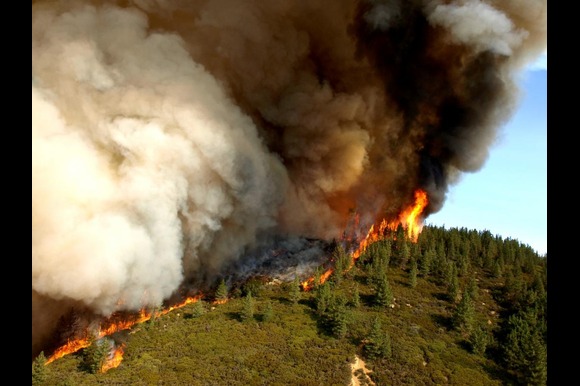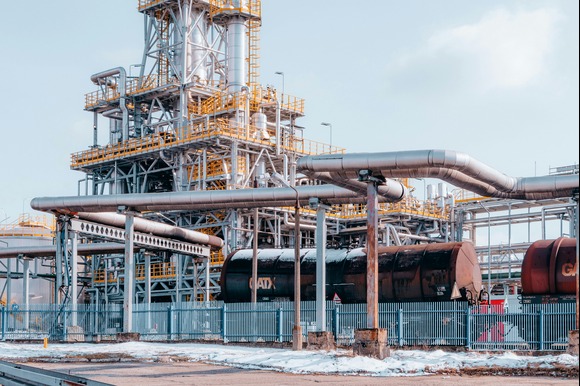
By John Newman, from the interagency
The European Union has endured its worst wildfire season since official records began in 2006, with an unprecedented one million hectares scorched so far this year—an area equivalent to roughly half the size of Wales.
Spain and Portugal have borne the brunt of the devastation, with EU scientists estimating that around 1% of the entire Iberian Peninsula has burned. Researchers warn that the escalating severity of wildfires across Europe is directly linked to climate change, a conclusion echoed in a recent analysis by the World Weather Attribution (WWA) group at Imperial College London.
Spain and Portugal hit hardest
Spain has suffered the greatest damage, with more than 400,000 hectares destroyed between January and 26 August, according to figures from the Copernicus European Forest Fire Information System (EFFIS). This is more than six times the average for the same period from 2006 to 2024.
Neighbouring Portugal has also experienced unprecedented losses, with some 270,000 hectares burned—nearly five times its average for this time of year. In total, the combined burn area across the Iberian Peninsula stands at 684,000 hectares, an expanse four times the size of Greater London. Alarmingly, most of this destruction occurred within just two weeks.
Northern Portugal and Spain’s north-western regions of Galicia, Asturias and Castile and León have been especially affected, including forested areas and protected sites such as the Picos de Europa National Park. Fires have also impacted major routes along the Camino de Santiago pilgrimage, which typically attracts more than 100,000 visitors during the summer months.
Unprecedented firefighting efforts
The crisis has triggered the largest known deployment of the EU Civil Protection Mechanism’s firefighting teams. Smoke from the blazes has sharply reduced air quality across the region, with southerly winds carrying haze as far as France and the United Kingdom.
The fires are also exacerbating climate change by releasing vast amounts of carbon dioxide. Spain alone has emitted a record 17.68 million tonnes of CO2 from wildfires this year—the highest figure since satellite records began in 2003. To put that in perspective, it exceeds the entire annual CO2 emissions of Croatia in 2023.
Climate change link confirmed
Scientists say the worsening fire seasons are being fuelled by human-driven climate change. A rapid attribution study by the WWA group found that extreme fire conditions in Turkey, Greece and Cyprus this summer were made around ten times more likely due to global warming. Overall, climate change was responsible for a 22% increase in the extreme weather conditions that underpinned the wildfires.
Theodore Keeping, a wildfire scientist at Imperial College London’s Centre for Environmental Policy, explained that rising global temperatures are driving more extreme heat, drying out vegetation and making it far more flammable.
“The continued burning of fossil fuels will lead to even more of these extreme fires,” he warned. “It was urgent 10 years ago to stop burning fossil fuels. Today, with 1.3C of warming since pre-industrial times, we are seeing new extremes in wildfire behaviour that have pushed firefighters to their limit.”
WWA researchers have already begun a rapid analysis of this year’s fires in Spain and Portugal and expect similar findings.
Rural depopulation adds fuel to the crisis
Beyond the direct effects of climate change, demographic and land-use changes are worsening the problem. Rural depopulation across southern and eastern Europe means once-managed farmland is being abandoned, leaving vegetation to grow unchecked and providing more fuel for fires.
“Young people are leaving villages for cities in search of work, so the agricultural land that used to act as natural fire breaks is disappearing,” said Keeping.
Ecological risks and climate feedback loops
While wildfires have always been part of Mediterranean ecosystems—and some species, such as the Iberian hare, even benefit from the new habitats created—scientists warn that today’s blazes are larger, more frequent and far more destructive than in the past. Native cork oak trees can colonise burned areas, but when fires return before ecosystems recover, landscapes may enter a destructive climate feedback loop.
“A warming climate is driving more frequent and larger fires, which in turn drive more carbon emissions that remain in the atmosphere, which then warms the climate even further,” said Dr Thomas Smith, Associate Professor in Environmental Geography at the London School of Economics.
The escalating fire risk not only threatens long-term ecosystem stability but also accelerates soil erosion and risks contaminating rivers and reservoirs with ash, according to Professor Stefan Doerr, Director of the Centre for Wildfire Research at Swansea University.
Looking ahead
Experts say the future will bring even greater challenges for fire management, but proactive measures can help. These include reducing excess vegetation in fire-prone regions, improving ignition prevention, advancing detection technologies, and strengthening firefighting capabilities.
Yet, as scientists emphasise, unless fossil fuel use is curtailed, the Mediterranean—and Europe more broadly—will continue to see devastating fire seasons of unprecedented scale.




